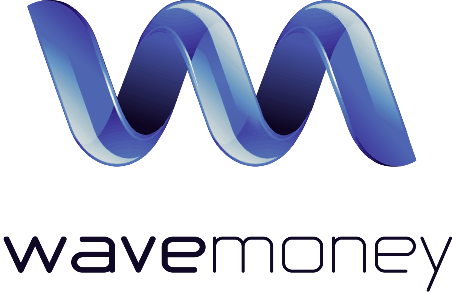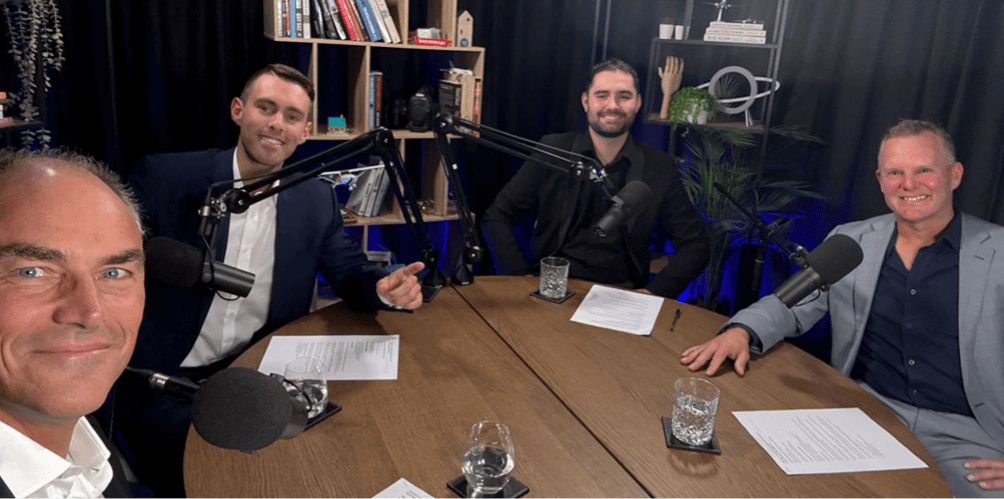
By:

Today, brokers are building businesses on digital platforms, engaging clients nationally, and navigating a far more complex lending landscape. Yet, for all the change, one constant remains: broking is still a people and relationships business.
That was the underlying theme of the latest Broker Daily Spotlight podcast, produced in partnership with Wave Money, featuring John Flavell (founder and managing director of Wave Money) and two very different—but equally passionate—brokers: Sam Ayliffe of Astute Manly, with more than 20 years’ industry experience, and Bill Childs of Limitless Lending Group, who has built a thriving business in record time through the power of digital marketing.
What followed was a candid conversation that spanned the past, present and future of broking—from fax machines to TikTok leads and complex multi-entity investment portfolios.

With Wave Money founder and managing director, John Flavell.
“Applications were four or five pages long and you sent them by fax”, recalled Ayliffe of his early days, “If you were good at packaging an application, and you had strong lender relationships, you’d get the deal through.”
Back then, brokers accounted for around 30 per cent of the market. Winning business meant building trust with referral partners—real estate agents, solicitors, accountants—and then winning over clients who had never considered a broker before.
“It was very different, but exciting,” Ayliffe said. “We were pioneering, really. We were making the case for why the broker channel needed to exist.”
By contrast, Childs’ career couldn’t be further removed. Based in Coffs Harbour, almost all his deals come from online leads generated through TikTok and Instagram.
“I’ve probably written fewer than ten loans in my local area,” he said. “Clients come from all over Australia, and that means we can hire staff from anywhere too. We’ve gone from one to eight people in just over a year—all off the back of social media leads.”
The juxtaposition is stark: one broker forged in the analogue era of face-to-face networking, the other flourishing in the digital-first age. Yet both share the same conviction—that trust, relationships and advocacy remain the broker’s greatest strengths.
“Clients come from all over Australia, and that means we can hire staff from anywhere too.”
— Bill Childs, Limitless Lending Group
In the early 2000s, brokers were still explaining the concept of broking itself. Flavell reflected on his own days at NAB: “Inside the bank, I had to sell the value of brokers to executives who didn’t see the need for them. Meanwhile, brokers themselves were having to sell their value to clients. Fast forward to today, and you’d struggle to find a borrower who doesn’t see the benefit of using a broker.”
For Ayliffe, the shift in borrower expectations has been remarkable. “Today, I tell every client: congratulations for choosing third party. We’re the reason this market is competitive. Whether they stay with me or not, I want them to understand that brokers are the ones keeping lenders honest.”
Childs, on the other hand, sees the challenge in cutting through the noise of a crowded digital landscape. “Most brokers don’t do social well. They play it safe, try to please everyone, and end up being boring. I’d rather put my personality out there. Sometimes people don’t like it, but that creates engagement—and engagement drives leads.”
His approach is proof that authenticity resonates more strongly than polished marketing. “I posted videos for six months without a single lead,” Childs admitted. “But then suddenly it clicked, and now we get 100 to 200 inbound leads a month.”
The conversation inevitably turned to the changing nature of clients themselves. Today’s borrowers are more diverse, more informed, and often more complex.
The fastest-growing segment? Self-employed clients. Nearly 17 per cent of the Australian workforce now falls into this category and according to Flavell, the number is rising. But despite being the “engine room” of the economy, self-employed clients remain one of the hardest to finance.
“The old rule of ‘two years’ tax returns or no loan’ is outdated,” Ayliffe said. “So much can change in a year for a business owner. Why penalise someone who’s had a stellar 12 months just because their last tax return is out of date?”
That’s where lenders like Wave Money stand out, he added. “Wave takes a commonsense view. You still need substantiation, but it can be six or twelve months of BAS instead of waiting for two years’ returns. It’s a game-changer for small businesses that are growing fast.”
Childs echoed the point from an investor’s perspective. “Most of my clients are investors with complex structures—multiple trusts, companies, sometimes 10 or 12 properties. The majors don’t want to touch them. With Wave, I can workshop the deal with the credit team, get it understood, and actually get it done. That makes all the difference.”
“With Wave, I can workshop the deal with the credit team, get it understood, and actually get it done.”
— Bill Childs, Limitless Lending Group
For both Sam and Bill, the quality of the lender–broker relationship is just as critical as product or policy.
“You don’t get four or five people sitting around a table at a major, looking at your deal and finding a solution,” Childs said. “At Wave, we can call Tyler Peters [Head of Lending], speak directly to the credit team, and workshop the scenario. That’s how deals get done.”
Ayliffe emphasised the continuity: “When the same [Wave Money] assessor picks up a deal from start to finish, it avoids the constant re-litigation that drives brokers mad. That consistency is what makes brokers loyal to a lender.”
Favell compared it to the old days of the community bank manager. “Thirty years ago, people would introduce their kids to the local bank manager, because that person would look after them for life. That’s what brokers are now—the consistent advocate through every financial stage of life.”
A recurring theme was the limitations of a purely digital approach. Clients can Google the cheapest rate, but they can’t Google their way through policy nuance.
“Just because a bank advertises a certain rate doesn’t mean a client qualifies for it,” Childs said. “We know how to read the structure; we know which lenders will look at it differently. That’s where brokers add value.”
Ayliffe agreed: “It’s not about the cheapest rate—it’s about the right solution. Our job is to make sure the client likes us the day they get the keys, but also the month after, when they start repayments. Putting someone into a deal they can’t afford helps no one.”
That alignment—ensuring solutions are both competitive and sustainable—is where both brokers believe the best lender partners stand out.
To close, we asked Ayliffe and Childs what advice they’d offer to brokers at the start of their journey.
Childs’ counsel was simple: “Get your first ten deals right. Don’t rush, don’t fake it. Do a good job, then leverage those wins into referrals and content. And if you’re going to market on social, commit to it. Consistency is everything.”
Ayliffe focused on community: “Don’t try to do it alone. Surround yourself with people you admire. Lean on your networks, your lenders, your peers. This is a people business. The more connections you build, the stronger your business will be.”
Flavell wrapped up the episode with a broader reflection. “Whether you’ve been in the industry for two years or 20, it’s the people who make this profession special. Brokers are delivering outstanding outcomes for clients, and the future of the channel is in very good hands.”
“Whether you’ve been in the industry for two years or 20, it’s the people who make this profession special.”
— John Flavell, Wave Money founder and managing director
You can listen to the full conversation on the Broker Daily Spotlight Podcast below:

With Wave Money founder and managing director, John Flavell.

Wave Money is one of Australia’s leading non-bank lenders delivering residential mortgage solutions to an increasing pool of borrowers whose needs are not being met by many bank and non-bank lenders.